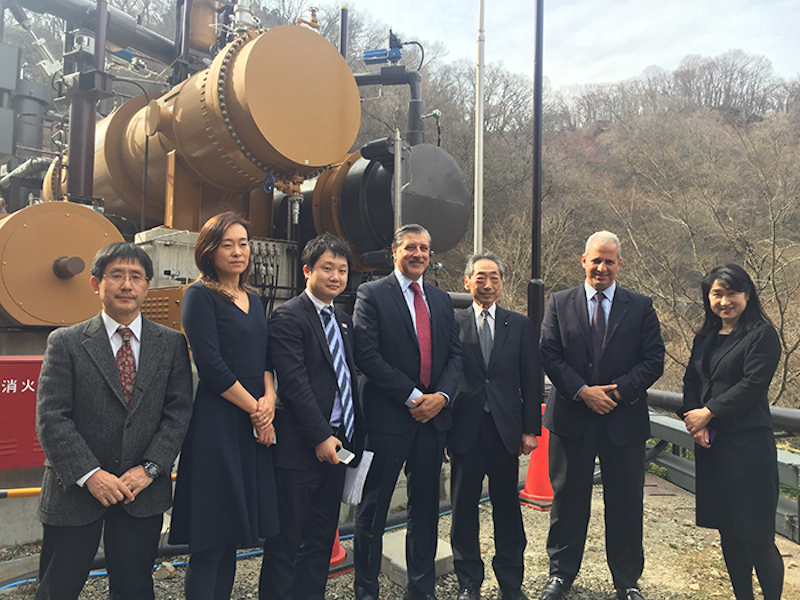IRENA on how small-scale generation unlocks untapped geothermal potential in Japan
With a largely untapped geothermal potential, small-scale development is though helping unlock some development potential in Japan, as highlighted in a recent article by IRENA.
A recent article by the International Renewable Energy Agency (IRENA) highlights how Japan is actually seeing small-scale geothermal development unlocking the at least a small part of the still mostly untapped geothermal potential.
Thousands of natural hot springs (or onsen) dot Japan’s countryside, providing a haven for relaxation and contemplation for millions of people. For thousands of years, they have been an important part of the historical and social fabric of the country, and they are represented everywhere from famous ukioy-e woodblock prints from the 18th century to contemporary sitcoms.
Today, however, they have the potential to be an important part of the transformation of Japan’s energy sector, with a power output equivalent to 23 megawatts (MW) lying beneath the surface in the form of geothermal energy, the world’s third-largest store. The world’s installed capacity for geothermal power was 12.9 gigawatts (GW) in 2017, with a levelised cost of electricity (LCOE) for recent projects ranging from USD 0.04 to around USD 0.13 per kilowatt-hour.
But despite Japan’s technical and construction preeminence and its significant energy potential, there are only around twenty geothermal plants in Japan, with a total output capacity of around 535 MW, only 0.3% of the country’s total electricity generation. High upfront costs and rigorous regulatory processes are some of the reasons that the Wasabizawa plant, currently under construction in Akita prefecture, is the first large-scale geothermal project in about 20 years.
However, in the wake of the Fukushima nuclear disaster the Japanese government introduced new policies to accelerate geothermal power plant deployment. These included streamlined procedures for the approval of projects in national parks and, crucially, a new higher feed-in tariff (FIT) for small geothermal plants to more than one-and-a-half times of that of larger facilities. This made it profitable to build plants with an output below 7.5 MW, which do not require environmental impact assessments and can be built in around half the time of larger plants.
These policies have not been unopposed. More than half of the geothermal sources are located around national parks or near the country’s 27,000 thermal springs that onsen rely on for their hot water supply. Critics believe that geothermal projects will adversely affect water supply or quality, or that the plants will have a detrimental impact on hot spring resorts or national parks.
As a result, an important role of the small-scale geothermal plants built since 2012 has been to work closely with onsen operators, hotels and inns to prove that small-scale geothermal power generation can coexist with tourism facilities, without negatively impacting Japan’s natural beauty.
The article then shares stories of successful development of small scale plants. Read more via link below.
Source: IRENA


















